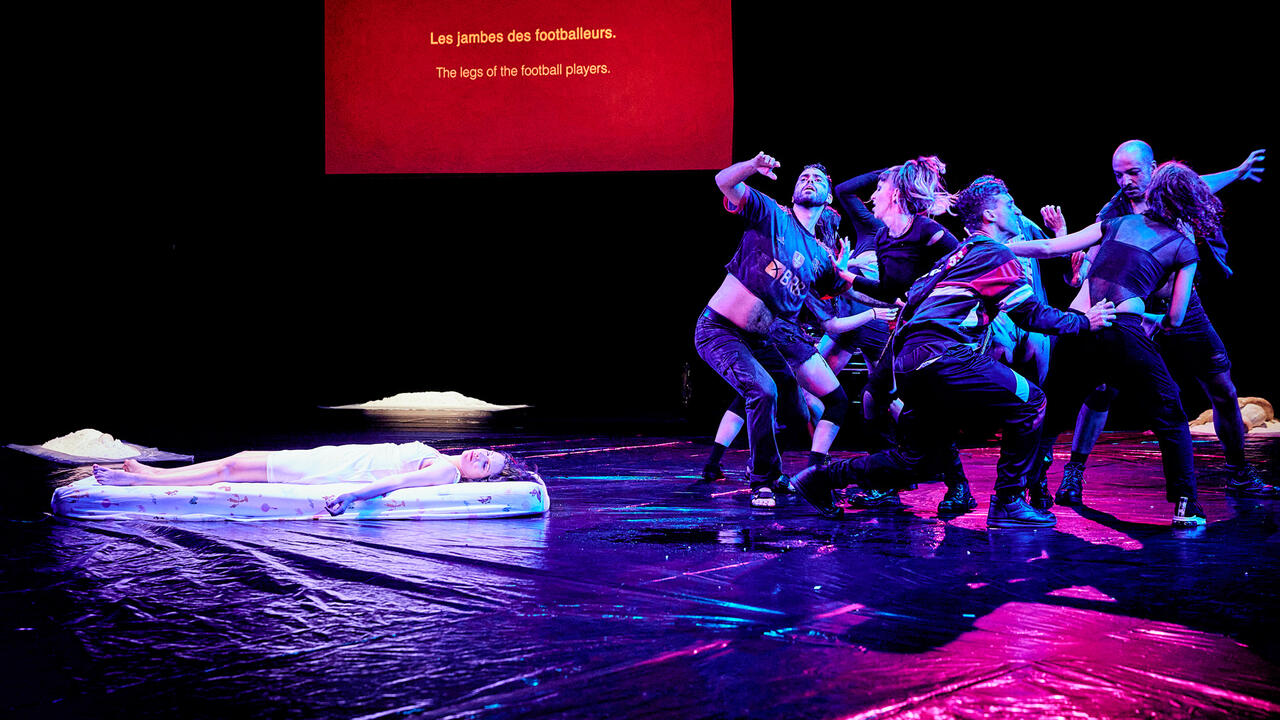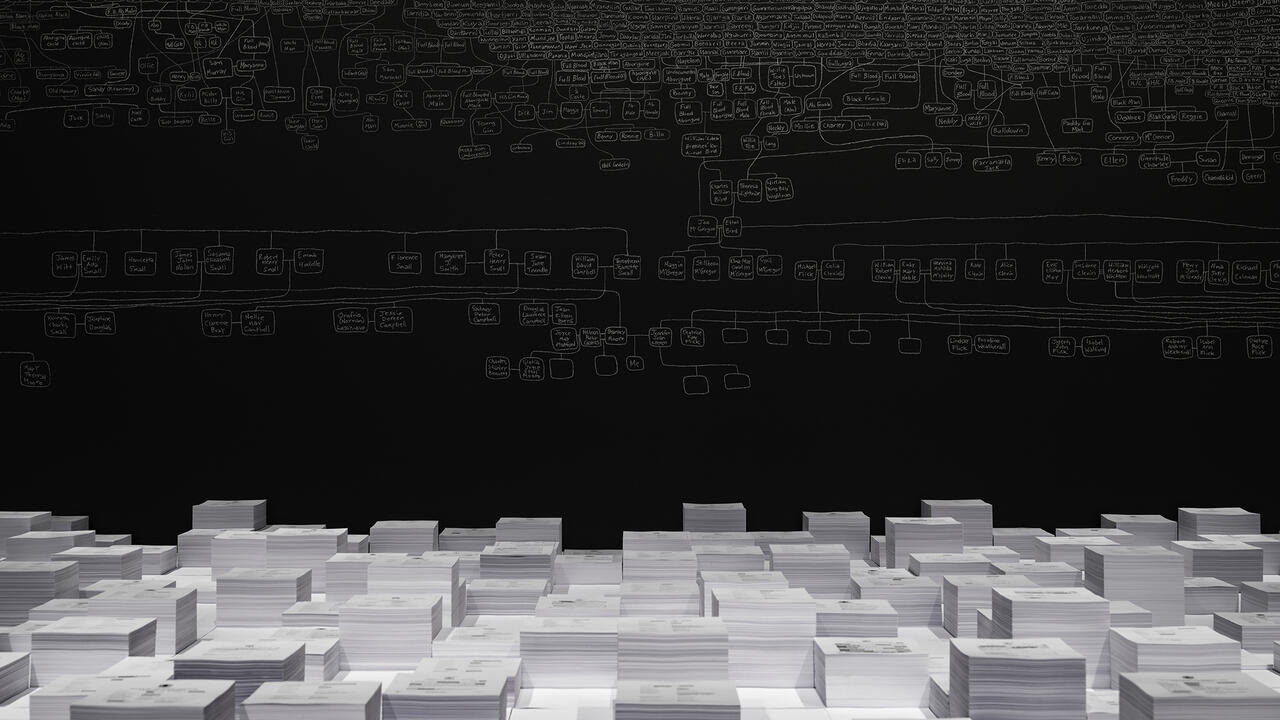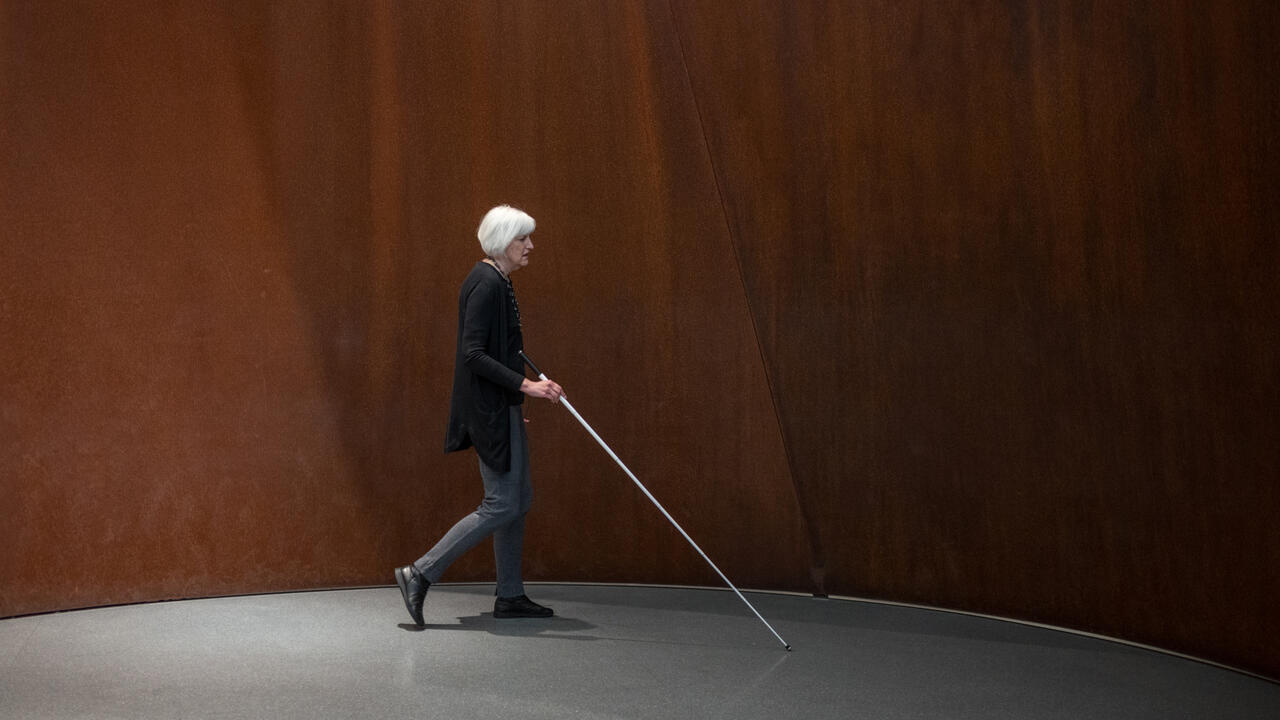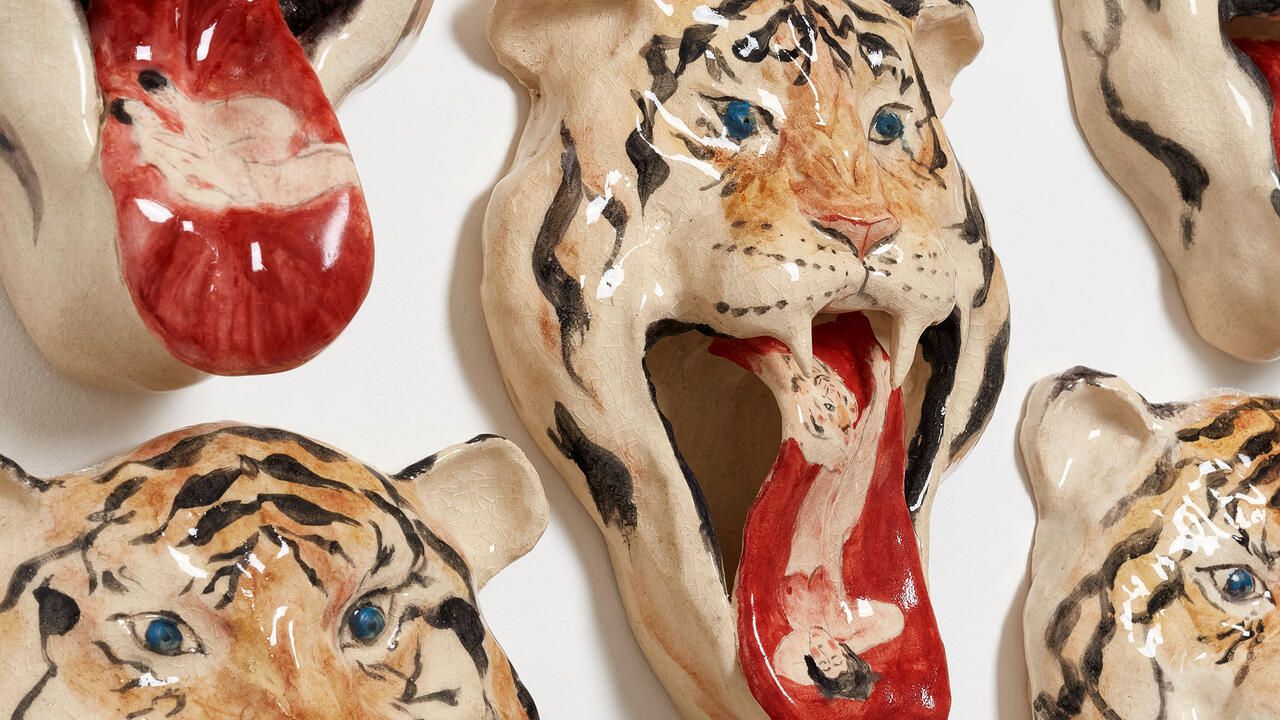Jane & Louise Wilson
As a title, Normapaths works on several levels. It begins with a woman's name, ends with an echo of a poet icon. More literally, it replaces that popular trigger of fear, 'psycho', with the word that is so often invoked by right-wing politicians and moralists: 'normal'. This can refer to gender roles, sexual practices, occupations, living space - a shorthand six letters for invoking the perception of the majority, the mass, with implicitly repressive consequences. This places the Wilsons right in the bohemianism hinted at by their trashed stage set and pop confidence. This may seem a small point, but within a nostalgia-saturated culture, their refusal of the status quo, symbolised by their rejection of the conventional narrative structure, is as stimulating as it is initially disorienting.
The blur of the title makes it clear that what we think of as 'normal' today is in fact psychotic; that in many ways we are living a 60s horror movie for real. The future has occurred, and we must adapt to its demands. Normapaths (1995) offers a controlled sensory environment of moving images, sound and space, which encourages you to enter its rhythm - initially through repetition - as you sit out its dense, complex 3 minutes 40 seconds several times, wondering what it was that you didn't quite catch. Like the junglist pirate radio stations clustering the airwaves of East London, it draws you into its own time: once there, you're locked in to the extent that it alters the way you see the world.
It's the projections that first engage the senses: two sets of images, shown at 90° to each other, in the corner of the space. These alternate activity with static composition, working both for and against one another. Explorations of the set - a disused brewery warehouse, extravagantly shot in yellow and blue - cut to sequences of violent motion: the rhythmic bounce from a trampoline, the destruction of the set wall, the spasms of a three-cornered fight. In the only exterior shot, a burning figure walks slowly along an alleyway, its rhythmic pacing is complemented by the noises of rain, thunder and a heavily treated pulse.
Sound is very important: it hooks you in. The Wilson's contemporaneous installation at the Milch Gallery, Crawl Space (1995), is saturated with the suspense drones of horror films, which programme you for the shock that is threatened but does not occur. In Normapaths, the rhythmic, heavily processed soundtrack to the trampoline sequence operates as a subliminal heartbeat - more than any other, this was the sequence I wanted to recur. Elsewhere, there is the sound of female exertion during the fight between the Wilsons and an unnamed female intruder. As Cherry Smyth notes in her excellent catalogue essay, 'Normapaths reinvents the core of adrenalin which women rarely have permission to explore. These moments of physical excess are transcendent, astonishing'.
Saturated in pop, the projections immediately invoke two icons of femininity: the cool, PVC cat-suited look of Avengers co-stars Diana Rigg and Honor Blackman and the girl gang glee of the Slits, trashing an old saloon in Derek Jarman's Jubilee (1978). There is a difference, however, which may be of time as much as anything else. Although couched in terms of feminine aggression, neither the Avengers co-stars (mid-60s) nor the
Slits (1977) were in control of the way they were represented - indeed, the Slits pulled a taped performance from the finished print of Jubilee for this reason. 18 years on, the Wilsons have the autonomy to fully explore, both in imagery and practice, the tensions cited by Smyth: 'between woman as victim and as inviolate, strong subject.'
This is also an installation about youth - a cultural breach of etiquette in itself. As they pogo on the trampoline, the Wilsons break the bounds of the body: just as they reach the top of each gleeful leap, often stretching out of frame, the tape slows down - freezing each twin at the zenith of their capabilities. This is what the middle-aged fear about each succeeding generation: the fact that the young are faster, smarter, more able to orientate in today's world. This syndrome - laid out for all time by the classic punker, the Third Bardo's I'm Five Years Ahead of my Time - is almost always couched in male aggression, a privilege which the Wilsons both access and challenge.
Across the space from all this sensory stimulation, the trashed set waits, the only noise coming from a slowly turning, three-pointed propeller. Here is a hidden story: why is the baby-sized figure stuck under the sink? How did the occupants live with that 70s wallpaper? Is that why the room bears all the hallmarks of a sudden, violent disappearance? Throughout it all, the three points spin. The Chisenhale gallery occupies an old veneer factory which made Spitfire propellers during the war that laid waste this whole area, except for these few Victorian streets. 50 years on, war is subsumed into popular culture.
Normapaths could not have been made at any other time but now. In its perceptual tricks, gender explorations, machine/body rhythms and, indeed, cinematic obsessions, it parallels the successful time navigations performed elsewhere in pop. At a moment when the stockpiling of the past threatens to suffocate the present, the Wilsons remind us that perception - in particular our relationship to time and space - is an ill-recognised cultural battleground.

















